Home
/
Carpet World Blog - Weft Carpets
/
Unraveling the Mysterious Origins of the Nida Turkish Rug at the Metropolitan Museum of Art

Unraveling the Mysterious Origins of the Nida Turkish Rug at the Metropolitan Museum of Art
Some timeless works of art have an ethereal quality that transcends human experience, and the Nida Rug at the Metropolitan Museum of Art in New York seems to be one of those pieces. Since then, this rug has sparked controversy among art aficionados, rug collectors, and art historians.
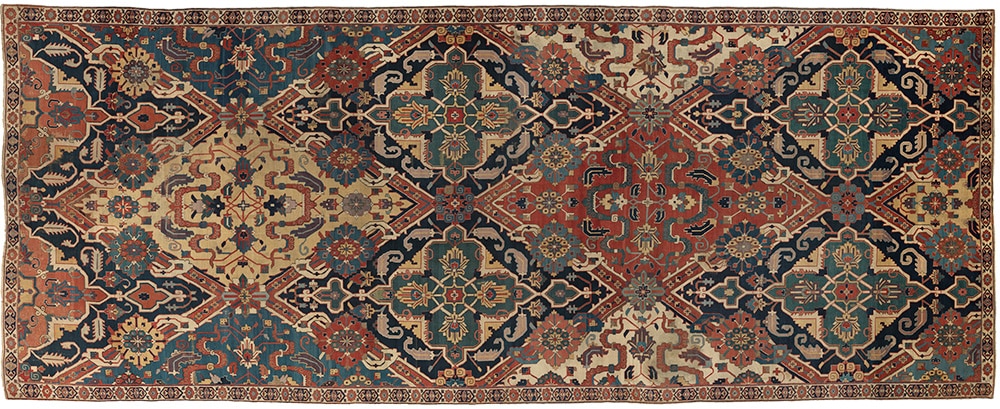
Nida carpet at the Metropolitan Museum of Art
The history and controversy surrounding the Turkish Nida rug
The Nida carpet was supposedly discovered in a mosque in the Nida province of Central Anatolia in Turkey in 1908. The carpet was given this name according to its place of origin or the place of its local discovery, which led to the classification of this carpet as one of the origins of Anatolia.
The rug was purchased by Willian T. Dewart of New York from 1941 to 1947, sold to famed carpet collector Joseph McMullan, and gifted to the Metropolitan Museum of Art between 1947 and 1956.
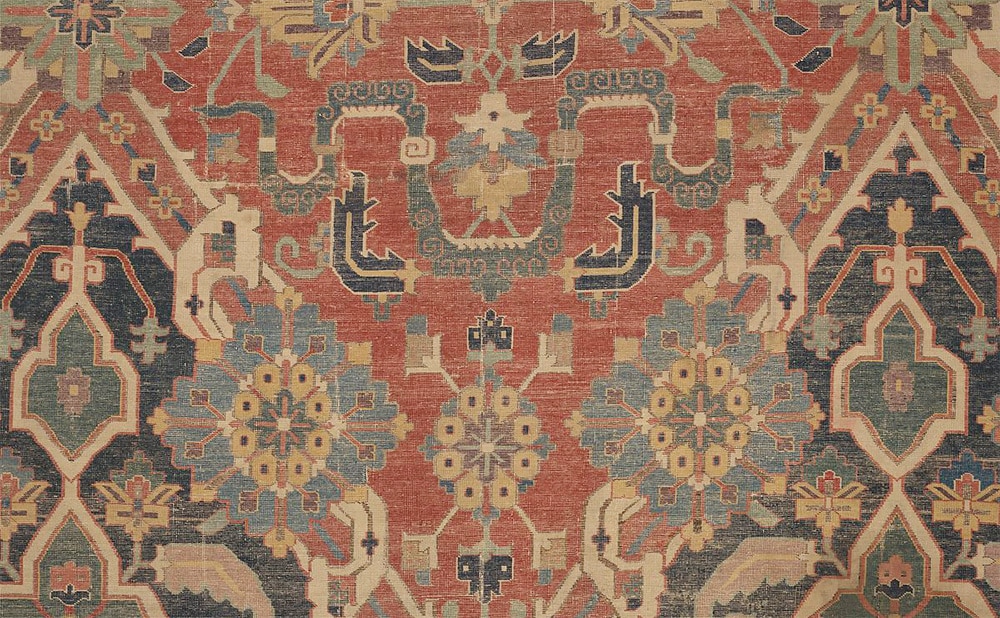
Nida carpet weaving
Adding to the evidence supporting the Nida carpet's Ottoman origins, this rug contains certain design elements belonging to Caucasian carpets or those produced in northwest Iran, and these elements later led to the carpet's reclassification as Caucasian carpets.
The problem of the origin of the Nida carpet
The general shapes of the Nida carpet became distinctive features in creative carpet design during the periods of the Ottoman Empire, as these shapes are used in carpets, fabrics, and mosque tiles. Exclusive design for ottoman tiles.
On the other hand, the geometric shapes found within each part of the carpet are very similar to the tribal carpets produced by the tribes that inhabited the Caucasus Mountains. The dark and Herati designs found in the center of the individual parts are of Persian origins and Asian influence.
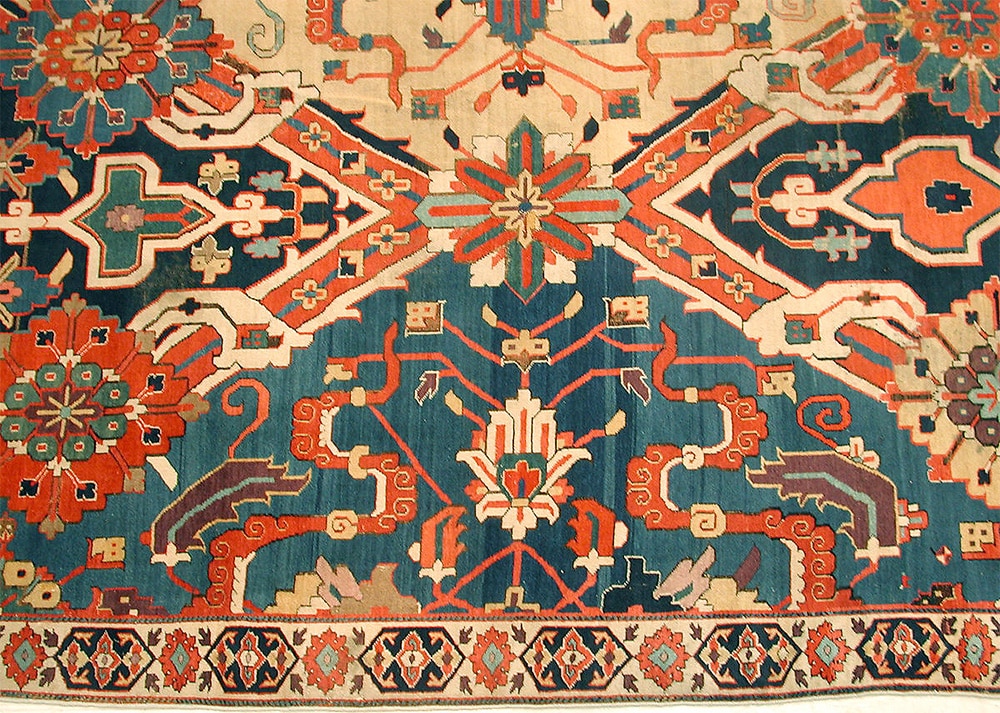
The mystery of the origins of the rug is further complicated. The technique used in weaving the rug is the characteristic technique of area rugs in Kerman, Iran. This technique is commonly known as the “vase technique.” It involves placing three rows of weft threads between each row of knots, and the first row is pulled The third is a firm, yet soft middle row, which gives us the unique texture and reflective qualities, making our carpets very durable.
The pattern and technique used in this rug mimics the silk carpets produced in Iranian Kerman, it uses cotton warp and weft threads with a pile of wool only, and the Turkish Gyurdish knot, or rug symmetrical knot, is used in the carpet, which means that the rug likely has its origins. From Anatolia, as opposed to Persian because the Senneh rug knot or asymmetric knot is used in Persian carpets.
This mixture of elements and patterns is what further complicates the puzzle of the origins of the Nida carpet. The Turkish province of Nida was a center for carpet production in the Ottoman Empire. Its carpets were distinguished in their techniques and patterns with an Anatolian character, while the Nida carpet shows the weaving technique and design that characterizes Anatolian carpets. However, all other elements refer to Caucasian or Persian origins.
A brief history of the Nida carpet
The Nida rug is believed to have been produced in the 18th century. It is an exceptionally large rug, at about 24 feet long by 10 feet wide. Its long and narrow size in itself makes it a unique piece. A rug of this size and intricacy is usually woven especially For royal palaces, ruling courts, or public places, the production of a carpet of this size requires a team of professional weavers, and it takes between one and two years to make it, while the quality of this carpet and its distinctive design confirm its popularity compared to tribal and rural carpets.
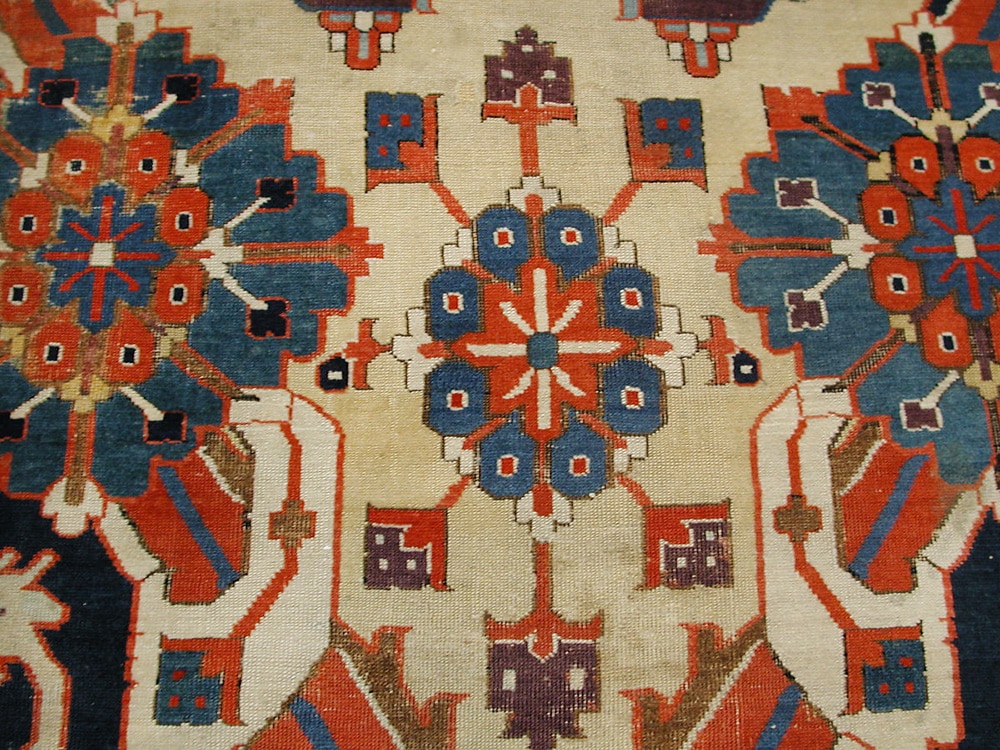
Detailed image of a Nida rug
There is another important thing that increases the mystery of the origins of this carpet, which is that the Ottoman Empire and the Safavid Empire were competitors in the carpet industry, and each empire sought to create a unique identity for the carpet in design, colors, and techniques. You can notice in the small-sized village carpets the incorporation of designs from all over the region. However, both the Ottoman Empire and the Safavid Empire sought to avoid any mixing of styles, and the artistic competition was intense, and the artists of any empire would not allow the artists of the other empire to mix elements, or so they claimed.
The mixing of elements in village carpets was largely due to the discovery of the Silk Road, which helped spread techniques and artistic designs through informal cultural exchange. Apparently as carpet tiles, this is what makes the Nida carpet unique, both as a historical piece and from a collector's point of view.
Nida carpet gives the world an insight into history, going beyond historical facts. It shows a picture of a world that is completely different from the one you might get by reading fragmentary historical events alone. Does this indicate a mixture of cultures, or does it indicate the possibility of “borrowing” designs and technologies From other cultures to give carpets a unique feature?
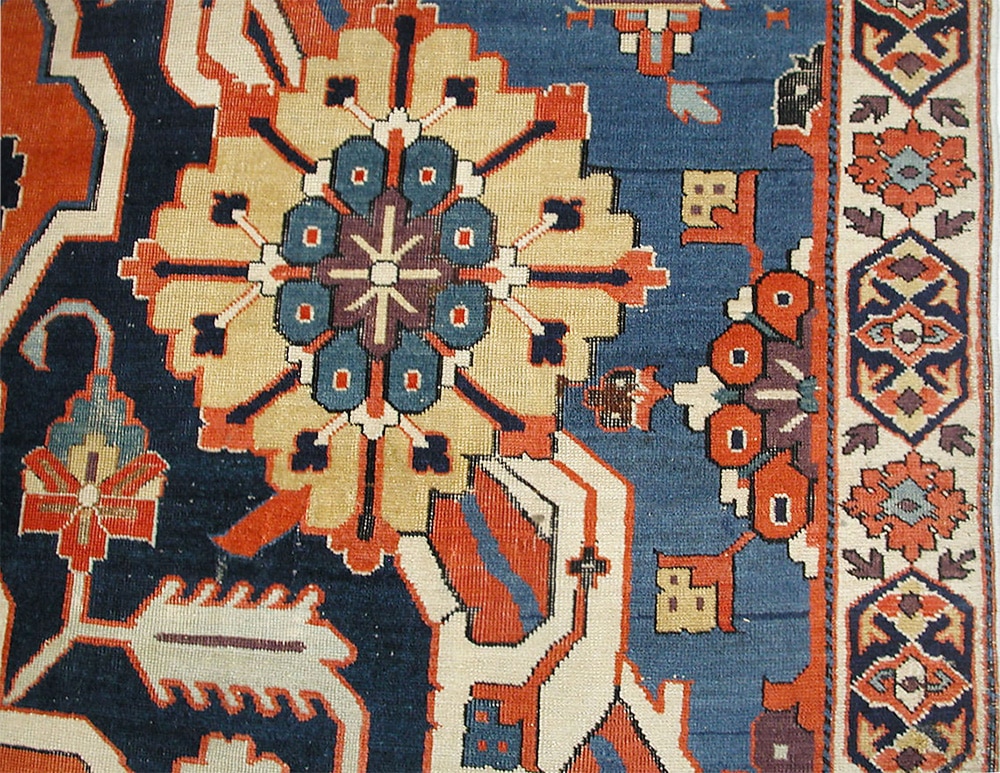
Nida carpet borders
The techniques used in the Nida rug span an area of more than 1,200 miles, showing a variety of techniques and styles that indicate a significant level of cultural mixture, certainly not the isolated cultures that historical records show.
The techniques and patterns employed in the design of this rug show a sophisticated design repertoire and an artist well versed in many different rug weaving concepts and ideals, and it seems that the master rug weaver or designer was able to extract the finest from among the finest to weave a masterpiece of exquisite beauty.
From the diaries of travelers across the region, we have reports of cities along the Silk Roads which were a mixture of cultures and languages, and these famous roads played a pivotal role in the development of art and culture that stretched from China to Europe and touched every region in between, and the Nida carpet is very important because it supports The fact that there is a level of cultural exchange documented in the diaries of these travelers.
Nida carpet - a universal treasure
Kerman carpets feature the Persian vase technique, which is a rare find, and only the most skilled professional weavers in Persia could weave carpets using this technique, due to the fact that it was only reserved for the royal family and the wealthy, and the combination of designs and colors used in this carpet is something Unusual, and shows many different cultural influences.
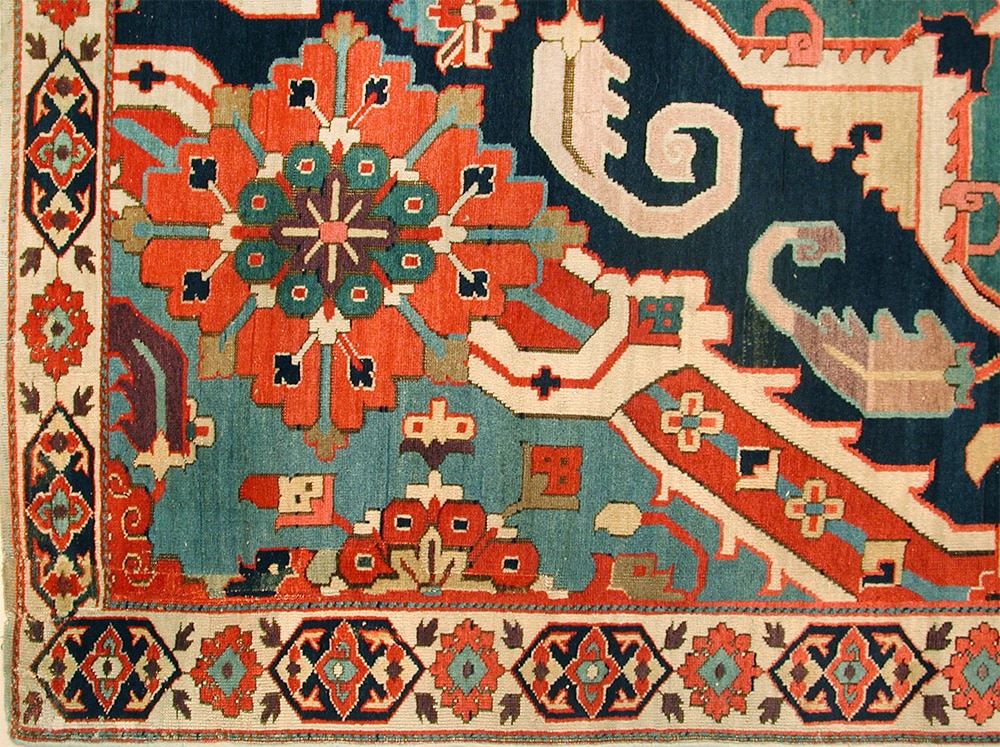
A corner of a Nida rug
The most correct opinion says that the Nida carpet is of Persian or Caucasian origin and was exported to Nida, and perhaps the blending of the Ottoman design was intended or dictated by someone who ordered the weaving of the carpet, and perhaps it was the idea of the artist (designer / weaver) to add the Ottoman character to the carpet, and even if we never know Wherever the great rug has its origins, we know that there is no other like it in the world.
The Nida rug is a unique and inspiring piece of art in the world of carpet collecting, and its mystery remains. Even with close examination of the rug, we know that this unique piece is a universal treasure, and that visiting this piece when it is on display at the Metropolitan will be an unforgettable experience, sparking the imagination and transporting you. To a world that has become forgotten.
Translated by: nazmiyalantiquerugs.com
Share
I was recently scammed out of $53,000 by a fraudulent Bitcoin investment scheme, which added significant stress to my already difficult health issues, as I was also facing cancer surgery expenses. Desperate to recover my funds, I spent hours researching and consulting other victims, which led me to discover the excellent reputation of Capital Crypto Recover, I came across a Google post It was only after spending many hours researching and asking other victims for advice that I discovered Capital Crypto Recovery’s stellar reputation. I decided to contact them because of their successful recovery record and encouraging client testimonials. I had no idea that this would be the pivotal moment in my fight against cryptocurrency theft. Thanks to their expert team, I was able to recover my lost cryptocurrency back. The process was intricate, but Capital Crypto Recovery’s commitment to utilizing the latest technology ensured a successful outcome. I highly recommend their services to anyone who has fallen victim to cryptocurrency fraud. For assistance, contact Recovercapital@cyberservices.com Capital Crypto Recover on Telegram OR Call Number +1 (336)390-6684 via email: Capitalcryptorecover@zohomail.com

































